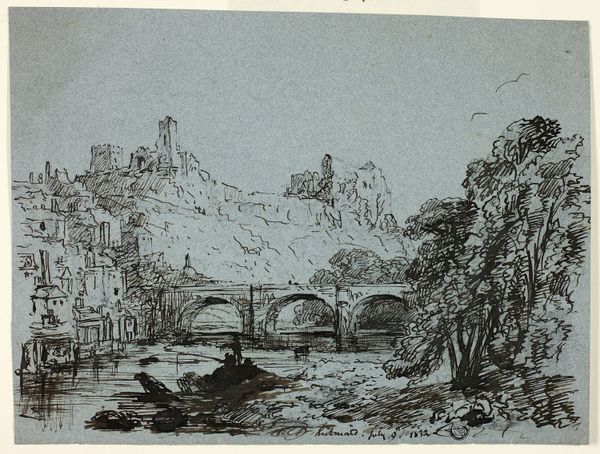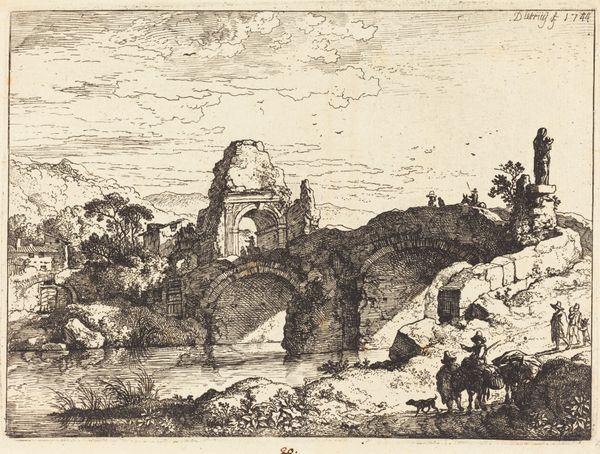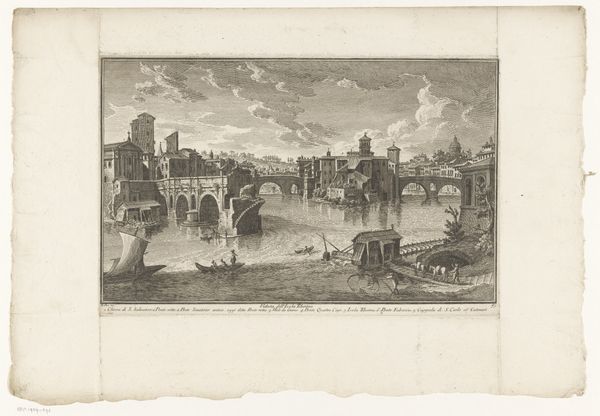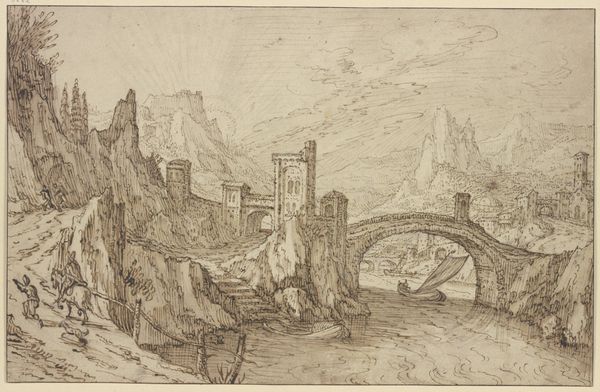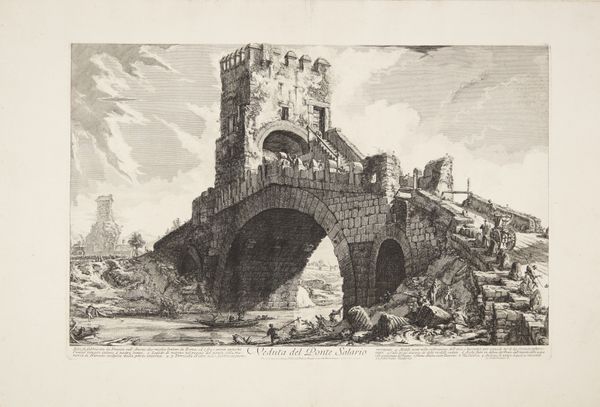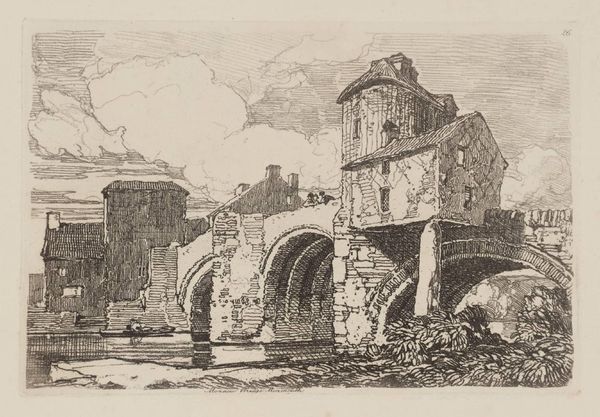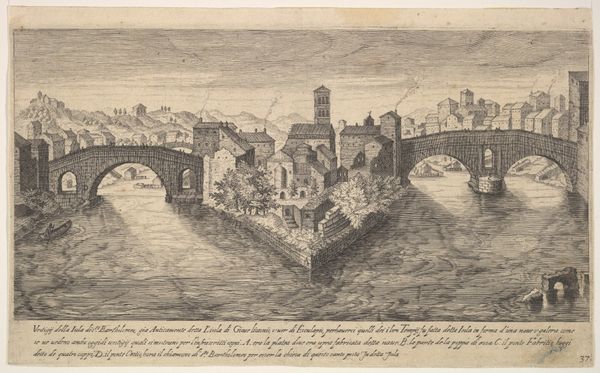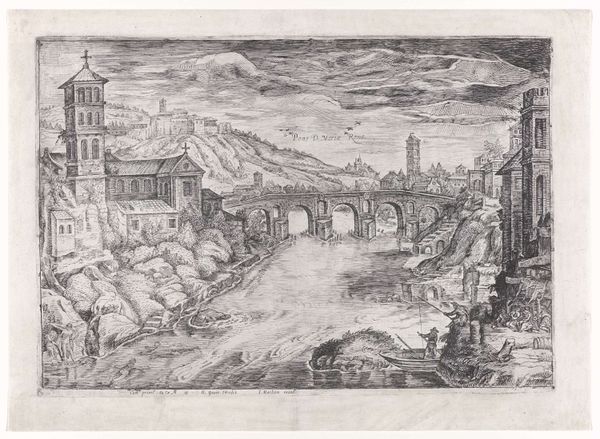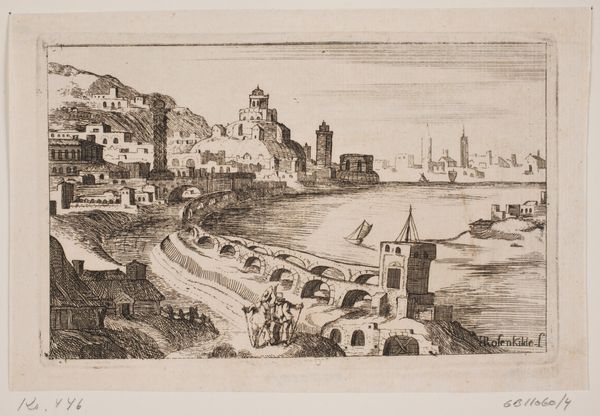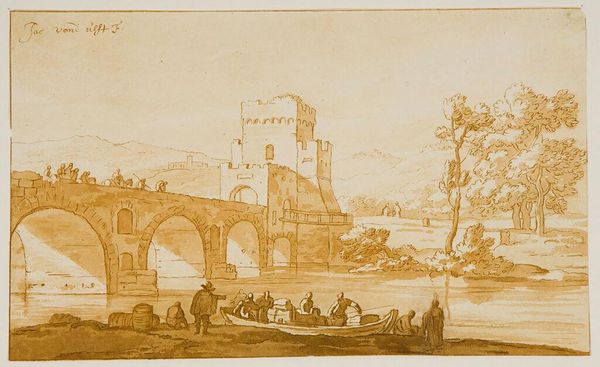
View of the Ponte Quattro Capi and the Island of the Tiber 1550
0:00
0:00
Dimensions: sheet (trimmed to plate mark): 22.9 x 32.6 cm (9 x 12 13/16 in.)
Copyright: National Gallery of Art: CC0 1.0
This engraving of the Ponte Quattro Capi and the Island of the Tiber was created by Hieronymus Cock in 1550. Cock was a printmaker and publisher active in Antwerp. In this image, we see a somewhat romanticized view of Rome. The bridge teems with people, a crucial artery for trade and social exchange. However, the buildings on the island appear dilapidated, a not-so-subtle commentary on the state of the city's infrastructure. Cock’s choice of the printing medium itself speaks to a burgeoning culture of information dissemination and exchange. Prints made images and ideas accessible to a wider audience, challenging traditional modes of artistic production and patronage. By studying such artworks alongside period documents, architectural plans, and social histories, we can gain a richer understanding of the complex interplay between art, society, and institutions in 16th-century Rome. We can ask ourselves, what role did these kinds of images play in the shaping of cultural identity?
Comments
No comments
Be the first to comment and join the conversation on the ultimate creative platform.


